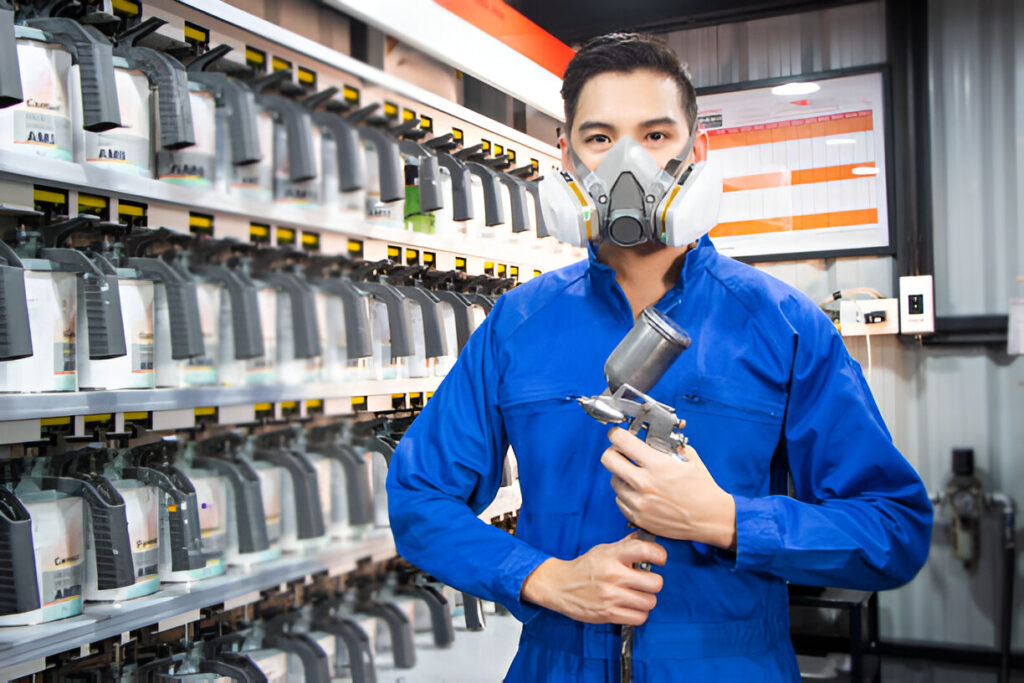Professional spray applications demand equipment that can handle constant use without breaking down or compromising finish quality. Durable spray equipment separates successful contractors from those constantly dealing with equipment failures and inconsistent results. The difference between consumer-grade and professional equipment isn’t just about price – it’s about engineering choices that affect everything from pump longevity to spray pattern consistency. Industrial spray equipment undergoes testing protocols that simulate years of heavy use, including pressure cycling tests, chemical compatibility analysis, and thermal stress evaluation. Recent industry data from the Spray Equipment Manufacturers Association shows that quality commercial sprayers average 3,000-5,000 hours of operation before major maintenance, while budget alternatives typically fail after 500-800 hours of professional use.
Contents
Pump Technology That Handles Real Work
The pump is basically the heart of any spray system, and different pump designs suit different applications. Piston pumps dominate the professional market because they generate consistent pressure across a wide range of viscosities. These pumps use check valves and cylinder arrangements that can handle thick materials like block filler or elastomeric coatings without losing pressure.
Diaphragm pumps offer advantages for specific applications, particularly when you’re spraying abrasive materials or need to avoid contamination. The diaphragm isolates the fluid from the mechanical components, which prevents wear from abrasive particles and makes cleanup easier with specialty coatings.
Gear pumps work well for medium-viscosity materials and provide very smooth, pulsation-free flow. They’re quieter than piston pumps and require less maintenance, but they can’t handle the pressure ranges needed for heavy-bodied materials or high-volume applications.
Pump displacement matters more than maximum pressure for most applications. A pump that moves 2.5 gallons per minute at working pressure will outperform one that hits higher pressure but only moves 1.5 gallons per minute. Real-world spraying is about volume and consistency, not peak pressure numbers.
Hose and Gun Systems Built to Last
Professional hose assemblies use different construction than consumer equipment. Multiple wire braids provide pressure resistance while maintaining flexibility through thousands of flexing cycles. The inner liner material needs chemical compatibility with your typical coatings – standard rubber liners degrade quickly with solvent-based materials.
Whip hoses at the gun end take enormous abuse from constant flexing and dragging across surfaces. Quality setups use reinforced whip hoses with strain reliefs that prevent cracking at connection points. Cheap whips fail predictably at the crimped connections, usually during busy jobs when replacement isn’t convenient.
Spray gun design affects both finish quality and operator fatigue. Guns with proper weight distribution and ergonomic triggers reduce hand strain during long spray sessions. The trigger mechanism itself needs to provide consistent pressure across its full range – cheap guns develop dead spots where slight trigger movements create pressure surges.
Filter systems protect expensive spray tips from contamination. Inline filters catch particles that would otherwise clog tips or create spray pattern irregularities. Manifold filters provide backup protection and allow quick filter changes without depressurizing the entire system.
Motor and Drive System Engineering
Electric motors in professional spray equipment need to handle the stress of frequent starts and stops under load. Universal motors provide high power-to-weight ratios but have shorter lifespans due to brush wear. Induction motors last longer and run cooler, making them better choices for equipment that runs continuously.
Drive coupling systems transfer power from the motor to the pump while accommodating slight misalignments. Flexible couplings absorb vibration and prevent damage from sudden load changes. Direct-drive systems are more efficient but transmit all motor vibrations directly to the pump assembly.
Cooling systems become critical for continuous operation. Air-cooled motors need adequate ventilation and clean cooling fins. Liquid-cooled systems provide better temperature control but require more maintenance and add complexity that can fail in field conditions.
Variable speed drives let you adjust pump output to match application requirements. This isn’t just convenience – running pumps at optimal speeds reduces wear and improves material atomization. Constant pressure systems automatically adjust motor speed to maintain consistent pressure as tip wear or viscosity changes affect flow rates.
Material Compatibility and Chemical Resistance
Different coating types attack equipment materials in different ways. Solvent-based materials dissolve rubber seals and gaskets not designed for chemical exposure. Water-based materials can cause corrosion in metal components that aren’t properly protected. Two-component materials often contain isocyanates that attack certain plastics and elastomers.
Wetted parts inventories help you understand what touches your coating materials. Pumps, hoses, guns, and tips all have specific material compositions that affect compatibility. 316 stainless steel handles most materials well, but aluminum components can’t tolerate some acidic coatings.
Seal and gasket materials vary significantly in chemical resistance. Fluoroelastomer seals cost more than standard rubber but resist degradation from aggressive solvents. PTFE packing works well for most applications but requires different installation techniques than traditional packing materials.
Regular flushing protocols extend equipment life regardless of material compatibility. Even compatible materials leave residues that build up over time. Proper flushing procedures remove these residues before they cause problems with seals or internal passages.
Maintenance Systems for Reliability
Preventive maintenance schedules keep professional equipment running reliably. Daily maintenance includes checking fluid levels, inspecting hoses for damage, and testing spray patterns. Weekly tasks might include filter changes and pressure checks. Monthly maintenance covers seal inspections and calibration verification.
Lubrication requirements vary by equipment type and operating conditions. Over-lubrication causes as many problems as under-lubrication, attracting dust and debris that accelerate wear. Most professional equipment includes specific lubrication charts showing exactly what needs attention and how often.
Parts availability affects long-term equipment viability. Established manufacturers maintain parts inventory for discontinued models, while smaller companies might leave you stranded when components fail. Factor this into purchase decisions, especially for specialized equipment that sees heavy use.
Service network access matters for complex repairs. Equipment manufacturers with local service centers or authorized repair facilities provide faster turnaround times and proper parts availability. DIY repairs void warranties and often create additional problems if you don’t have proper tools and training.




